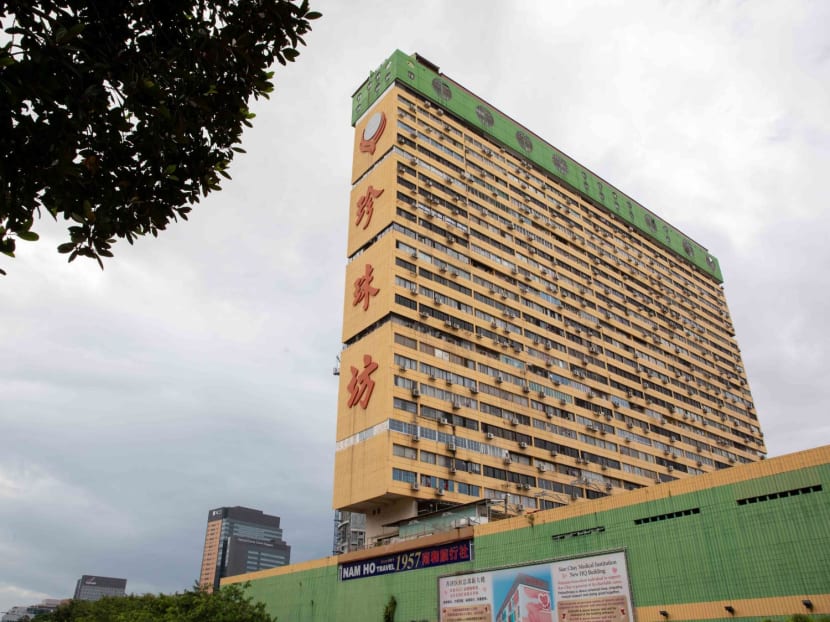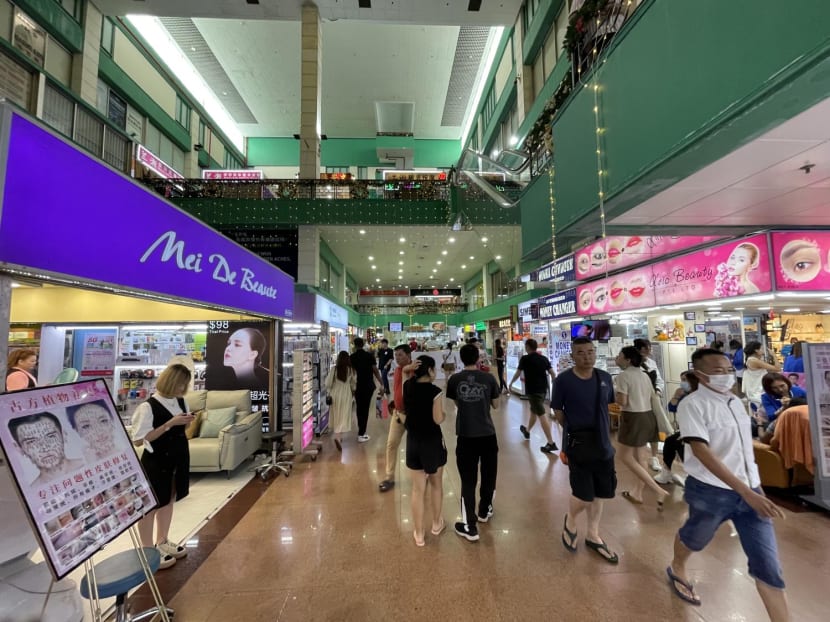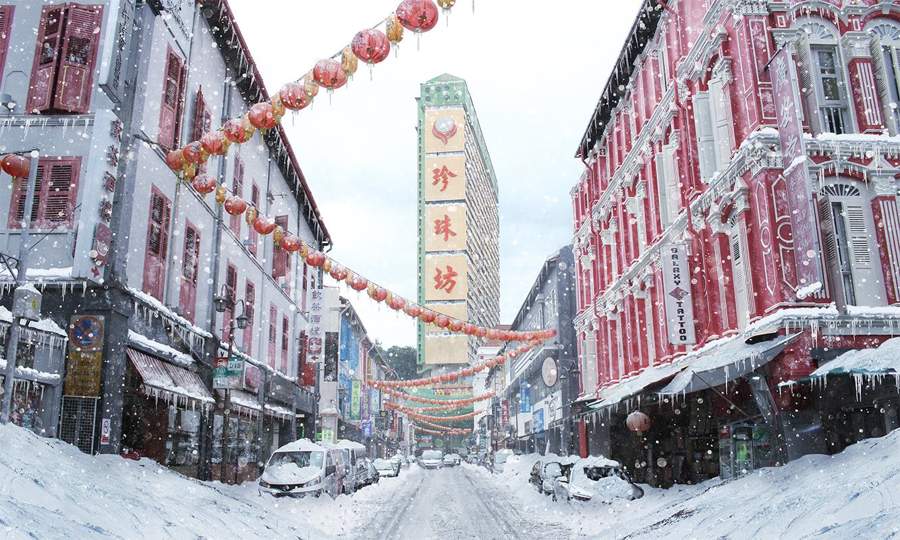Heritage lovers laud People's Park Complex's possible conservation, but some say total rebuild better for business

Join our WhatsApp or Telegram channels for the latest updates, or follow us on TikTok and Instagram.
- People's Park Complex, a Chinatown landmark in Singapore for 50 years, is being considered for conservation by the Government
- Initially praised for its experimental architecture, it has become an iconic symbol of the area
- Tenants have mixed views, with some advocating for redevelopment and others valuing its historical and architectural significance
- The ongoing conservation study is seen positively by heritage experts, emphasising the importance of preserving post-independence buildings that reflect Singapore's architectural evolution

BY
AMANDA YEAP
Published December 25, 2023Updated December 26, 2023
WhatsAppTelegramFacebookTwitterEmailLinkedIn
SINGAPORE — When People's Park Complex first opened 50 years ago, it was a trailblazer in its own right. Apart from being Singapore's largest shopping centre then, the complex was also hailed as a masterpiece of 1970s experimental architecture.
Although much of its beauty has waned due to wear and tear over the decades, an announcement by the Government that it is considering conserving the building has been lauded by heritage experts.
Over its 50-year existence, the 31-storey landmark has evolved into one of the most recognisable symbols of Chinatown.
For this reason alone, many see the conservation study as a step in the right direction.
There are, however, mixed views from tenants operating their businesses within the complex.
While some agree that the building should be conserved, others think it would be better for the entire building to be refurbished and rejuvenated to keep up with the times.
BUILDING 'TOO OLD' FOR CONSERVATION
A staff at a massage parlour, Mr Chan Wai Keong, 80, said the 50-year-old building was just too old for his liking."If it were up to me, I don't think the conservation will be worth it. It's better to redevelop everything," he said.
Mr Chan also wagered that the conservation plan, if it comes to fruition, would impact the ongoing collective sale. "It'll probably be harder to find a buyer," he said.
The collective sale committee of People's Park Complex launched the sale in March, and this is their second attempt at selling the building.
The first was in 2018, but the deal fell through due to extensive negotiations with the owners.
Another massage parlour owner, who wished to be known only as Ms Chai, echoed Mr Chan's sentiments.
The 59-year-old agreed that a complete redevelopment would be better for businesses here.
"The building here is quite old, and people nowadays are more attracted to the larger, newer malls," she said.
"So I don't think conserving the building would be a good idea. They should just change how everything looks to attract more customers. Maybe business would be even better for everyone after that."
Asked if she would be concerned with the hassle of moving out if that were the case, Ms Chai said she was not bothered by it as she plans to retire after working for a few more years.

MEANINGFUL FOR THE YOUNGER GENERATION
However, several tenants still see the beauty in preserving People's Park Complex as much as possible, with some saying that old buildings such as this are Singapore's national treasures.ADVERTISEMENT
Optical shop owner Steven Chong, 65, said the younger generation deserves the chance to witness the glory of Singapore's past and People's Park Complex is one of many classic icons of history.
"The building is quite well-maintained for its age, but the authorities can do a lot more to spruce things up and make the interior look more pleasant while keeping the exterior's famous facade," he said.
"This may not be the most beautiful building, but it is in the heart of Chinatown, so it's worth it for them to do so," he said.
Mr Chong said most of his customers are regulars, which means that almost all of them are senior citizens.
"Rejuvenating the interior would make it easier to pull the younger crowd," he said.
Asked if he thinks that the conservation study would impact the collective sale, Mr Chong presumed there might be a slight drop in the asking price.
"I don't have a say in this. But my guess is yes, because, with the conservation, there would be a limit to how much one can redevelop the building."
The current reserve price for People's Park Complex is S$1.3 billion.
A massage parlour worker who wanted to be known only as Ms Mei Ling, 78, said the building was worth conserving as it is the most famous icon in Chinatown.
"A lot of tourists also come here to visit. (The Government) should protect this place," she said.
Some shoppers are on the same page as Mr Chong and Ms Mei Ling, and one of them was Mr Tan Thian Lai, a 69-year-old packaging worker who lives in Tiong Bahru.
"My house is just nearby, so it's very convenient for me to come over here a few times a week to meet friends, drink tea and enjoy good food," he said.
"I would lose a favourite hangout spot if this place were to be gone one day, so I hope the building can be well-protected for years to come."
Another shopper, known only as Hock Foo, 76, drops by the complex once a week to catch up with his friend.
"This place is so lively, especially during Chinese New Year. They should keep it as it is," he said.
WHY IS PEOPLE'S PARK COMPLEX WORTH CONSERVING?
Ms Melody Zaccheus, who writes about the heritage sector, told TODAY that although People's Park Complex may not strike the layperson as visually appealing today, it holds immense architectural significance."It is one of the important post-independence buildings designed by local architects, representing their futuristic vision for city living. These icons are characterised by their brutalist aesthetic . . . and reflect the move towards high-density, high-rise living.
"So it would be remiss to neglect them and leave them at risk of the wrecking ball," she said.
Although the conservation study is still ongoing, Ms Zaccheus calls the decision by URA a "relief", particularly as it follows the protection and rejuvenation of Golden Mile Complex — another historically rich and architecturally significant landmark gazetted for conservation in October 2021.
Parallel paths: The collective sale journeys of People's Park Complex and Golden Mile Complex
Both buildings are some of Singapore's most outstanding post-independence landmarks, with both being completed in the same year, 1973.As fate would have it, both buildings have experienced similar twists and turns in recent years, almost half a century after they were once revered as architectural masterpieces.
People's Park Complex's first collective sale attempt was in 2018, with an asking price of S$1.3 billion.
However, it was unsuccessful as the building's owners were unable to obtain the consent of 80 per cent of unit owners, which was needed for the sale to go through.
The second collective sale process is currently ongoing, carrying the same asking price.
Meanwhile, Golden Mile Complex had to go through two collective sales before being sold for S$700 million last May.
Today, the 16-storey complex belongs to its new owners – a consortium comprising Far East Organization, Perennial Holdings and Sino Land.
In 2021, right before the launch of the second sale attempt, the Urban Redevelopment Authority (URA) gazetted Golden Mile Complex as a conserved building due to its heritage significance.
Its new owners intend to polish the building while still paying tribute to its rich history by retaining its facade, retail atrium and play deck.
Expand to view
Veteran architectural photographer Darren Soh said both People's Park Complex and Golden Mile Complex were designed according to the "city in a building" concept.
Besides the architectural feats, Mr Soh said there were more reasons to conserve the complex, such as a unique main atrium known as the City Room. It introduced a groundbreaking concept pioneered by Japanese architects in the 1960s under the Metabolist Movement.
He described the City Room as being encircled by shops, resembling little buildings in an "interior city".
"But for me, the fact that People’s Park Complex has become an icon of Chinatown and a wayfinding instrument for all that wander in the streets below it amongst the shophouses is practical enough reason not to demolish the building," he said.
"In a way, People’s Park Complex is Chinatown, and Chinatown is People’s Park Complex."
Likewise, heritage blogger Jerome Lim said as one of Singapore's first modern shopping complexes, People's Park Complex has redefined how Singaporeans shopped and interacted with buildings and the spaces they contained.
"For this reason, the complex is also significant architecturally," said the author of the Long and Winding Road blog.
Mr Lim explained that the complex symbolised the dreams of young Singapore architects after independence. They aimed to create buildings that defined the era, breaking away from colonial-style structures by embracing modernist designs.
"Breaking down such buildings of the era, of which there are few left, and especially one as significant as this, will leave a huge gap in our architectural heritage as seen through our built urban landscape," he said.



